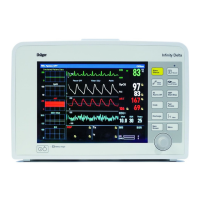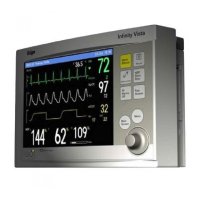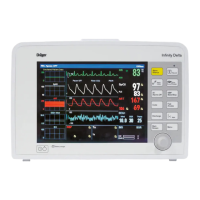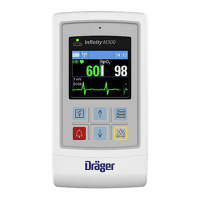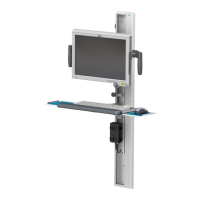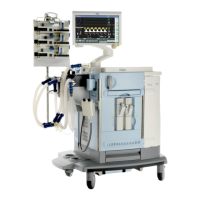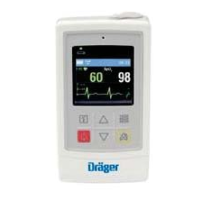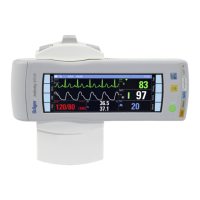14-18 DELTA/DELTA XL/KAPPA VF8
14 I
NVASIVE BLOOD PRESSURE
Duplicate Label Conflicts Between Pods
Conflicts also occur when two Hemo2, Hemo4, MPod – Quad Hemo or PiCCO pods
are configured for the same labels and transducers are connected to the pods.
Scenarios for duplicate label conflicts may vary. They may be detected when a second
pod is connected to an operating monitor, in which case the label of the first connected
pod prevails. If two pods storing duplicate labels are connected to a monitor prior to
start-up, the pod connected to the lowest-numbered pod port on the monitor (Aux/
Hemo2 or Aux/Hemo3) has priority, while the other pod is assigned an automatic
label (P1a
P3d).
Pulmonary Wedge Pressure Display
The monitor has a special display that accommodates taking pulmonary wedge
pressure measurements. The monitor averages the PA waveform values for 10
seconds and calculates a wedge pressure value (PWP). During the measurement, the
PA parameter box shows no systolic or diastolic values, and PA alarms are disabled.
NOTE: PWP is not available with the PiCCO pod.
WARNING: During wedge pressure measurements:
Alarm monitoring for invasive pressures, if enabled, is
temporarily disabled to prevent nuisance alarms. The
parameter box does not display a crossed bell icon
because alarm monitoring is automatically enabled
upon completion of a wedge pressure measurement.
For the safety of the patient keep the balloon-inflation
time to the minimum necessary to acquire an accurate
PWP value. Prolonged inflation of the balloon can
result in pulmonary hemorrhage or infarction.
Do not over-inflate the balloon because an over-inflated
balloon can rupture the pulmonary artery.
The PA catheter may move into the wedge position
before the balloon is inflated. One sign of this “cathe-
ter drift” is that the PWP waveform becomes wedge
shaped. Follow your hospital’s clinical guidelines to
correct the catheter’s position.
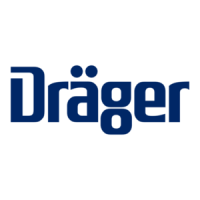
